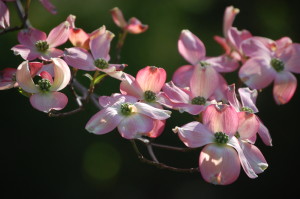 My husband and I walked to shul on Shabbat in the 10-degree chill. I’m not sure I’ve ever walked to shul in such cold weather, and doubt I would have gone had I not agreed to leyn Torah. I usually sing the Shirat haYam, the Song of the Sea, every year when we arrive at the parsha B’Shellach. I love it’s triumphant, unique trope, that seems to escalate with the joy we must have felt, at last liberated from Pharaoh’s bonds.
My husband and I walked to shul on Shabbat in the 10-degree chill. I’m not sure I’ve ever walked to shul in such cold weather, and doubt I would have gone had I not agreed to leyn Torah. I usually sing the Shirat haYam, the Song of the Sea, every year when we arrive at the parsha B’Shellach. I love it’s triumphant, unique trope, that seems to escalate with the joy we must have felt, at last liberated from Pharaoh’s bonds.
We were also going because we are leaving for Israel on Wednesday to see our daughter, who is studying at in a program, Binah: The Secular Yeshiva, which also involves volunteering in afterschool programs that work with underserved children in Tel Aviv. We figured we would receive an aliyah and a misheberach before heading off, niseah tovah.
I wore my down, rather than dress, coat, gloves, earmuffs and two scarves as outwear. The second scarf caused my breath to condense and fog my glasses. I wondered how fast we could walk the .4 miles (according to Google maps) to shul.
And then it hit me. Spring is an actual miracle. I was going off to shul to read the story of the splitting of the Sea of Reeds, among the greatest miracles recorded in the Torah, one of spectacle and awe, something unsurpassed by natural phenomenon and cinematic pyrotechnics. And yet each year, I am presented with a quiet miracle – that of winter turning to spring –one that perhaps does not rate in the same way as the splitting of a sea, but is nonetheless one of the most powerful messages of God’s protection.
Every year, we slog through winter waiting for the days to lengthen, and the sun to warm the earth. (I realize some of us are luckier than others and head to Florida, bypassing this rite of passage, but I am not concerned with such acts of flight at the moment.) The earth turns, the light changes, and eventually it’s March 21, the vernal equinox, and I can put away the down and Polar Fleece. The buds arrive on the trees, and it’s spring.
I wondered if animals h ave a sense of this shift. Do they recognize the power of the change? Squirrels bury their nuts and seem to know where and when to dig them up, so they must have some idea of what’s going on. Bears emerge from hibernation and salmon alter the direction of their swim.
ave a sense of this shift. Do they recognize the power of the change? Squirrels bury their nuts and seem to know where and when to dig them up, so they must have some idea of what’s going on. Bears emerge from hibernation and salmon alter the direction of their swim.
But how deeply is it ingrained in our collective, primitive psyches? Did we always just know and trust that after the snow, spring would faithfully arrive? Or did we have to learn it? Did primitive man worry and fear, once the snow had blanketed his landscape, that the green buds of spring would not return?
Yet each year, spring arrives without fail. We don’t tend to note such regular happenings as miracles. But imagine a world in which spring didn’t arrive. Yeah, I thought not. It’s not someplace you want to go. Better to pack up and move to Florida.
Tu b’Shvat arrives on Wednesday, the day we leave for Israel. Tu b’Shvat is known as the birthday of the trees. It’s when their sap begins to run once again – that is for a tree in Israel.
Our New York trees will have to wait. But I think it’s OK to celebrate the coming of spring a bit early. After all it’s not every day we get to witness an actual miracle.
